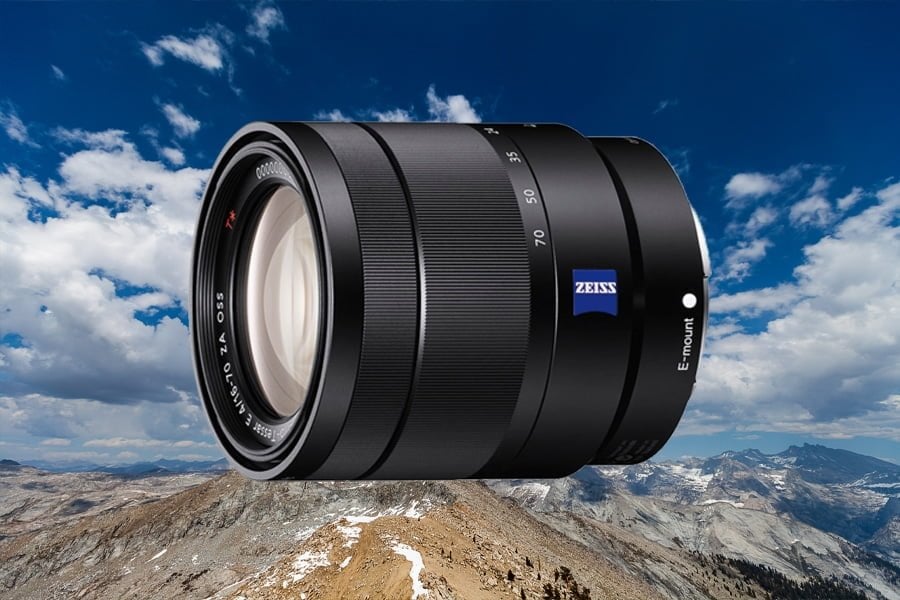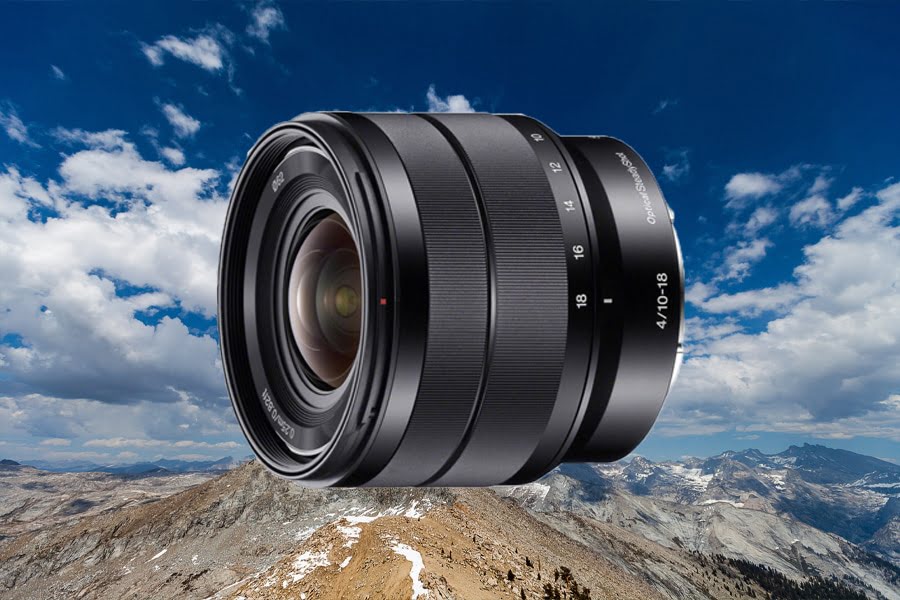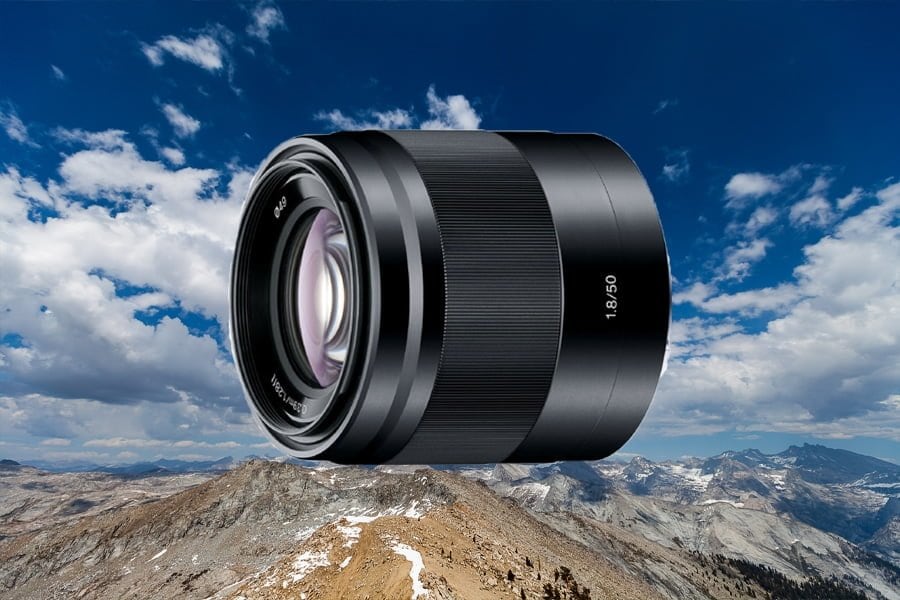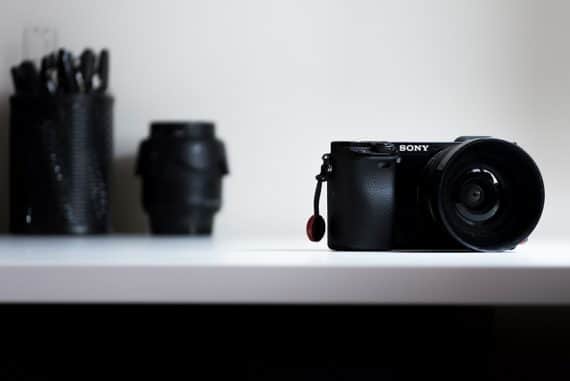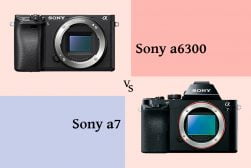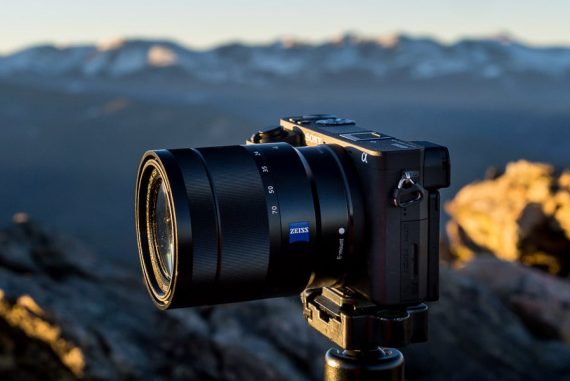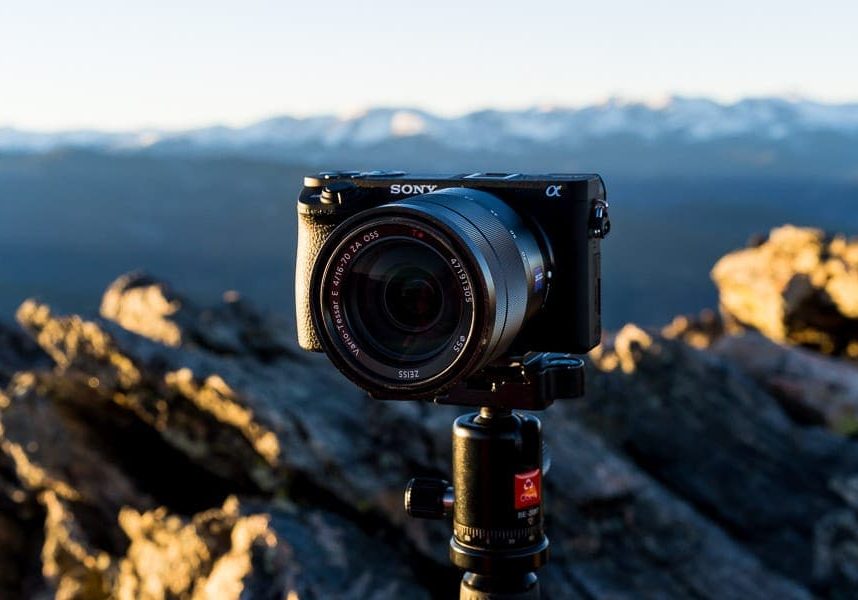
Best Sony A6300 Lenses
Just got a Sony a6300? Great! Now it's time to make the most of that amazing sensor & autofocus. Invest in one of these top 6 Sony a6300 lenses!
Camera Gear Guides | Lens Guides | Sony Lens Guides | By Marc Bergreen | Last Updated: January 23, 2024
So you’ve just purchased a Sony a6300, and now you need some lenses to go with it. Maybe you bought it with the kit lens but are ready to get a little more creative with your images.
Maybe you realized that the kit lens just can’t quite do everything you want it to (shoot in low light, create beautiful bokeh, etc).
You’ve come to the right place. Below are my favorite lenses for the Sony a6300 based on my experience with this series of a6xxx cameras.
It can be tough to decide what lenses to invest in first, so hopefully, this list of my top choices will help you out a bit.
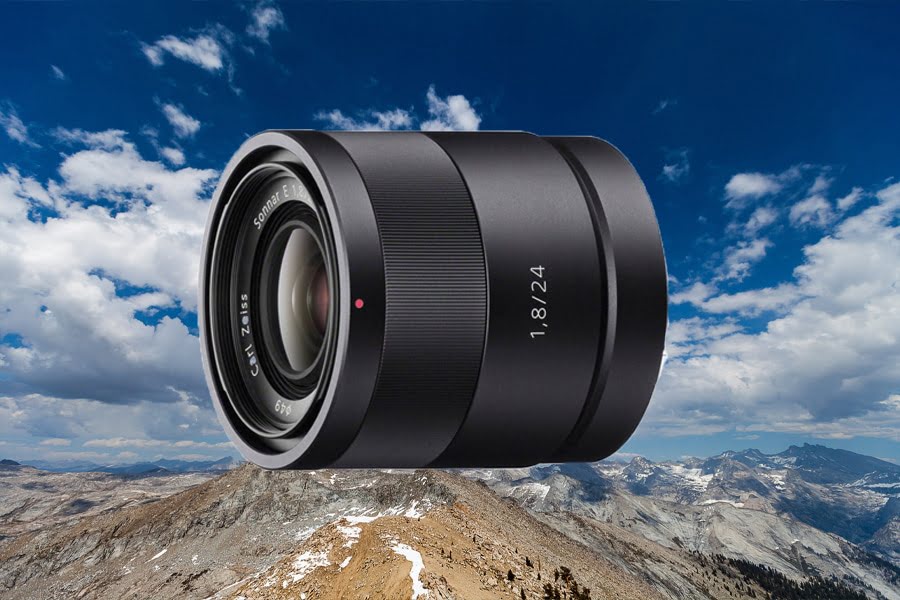
Great low-light performance, compact size, sturdy build quality and impressive auto-focus makes this a must have lens for your Sony a6300.
Before you start comparing lenses, I think the most important consideration is what sort of subject matter you like to shoot
Landscapes usually lend themselves to a wide angle perspective to capture the full scene.
To photograph portraits/events/family, you’ll want something with a fast aperture to create beautiful bokeh and isolate your subject.
I tend to shoot a wide variety of subjects so I try to have a full lineup of lenses that covers everything from wide to telephoto. I also like to have a few fast prime lenses that work well in low light.
Many people really like to have a nice mid-range zoom that works for almost any subject.
Since you chose the Sony a6300, you probably appreciate the incredibly compact design that fits in your pocket. With that, you’ll probably be selecting lenses are equally compact to match the balance/size of the camera body.
All of the options below pair nicely with the small size of this impressive little camera – check out our Sony a6300 review if you don’t already own it!
Best Sony a6300 Lenses in 2024
| Image | Product | Features | |
|---|---|---|---|
 | Sony 24mm f/1.8OUR #1 CHOICE |
| View Price → |
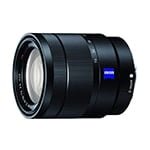 | Sony 16-70mm f/4BEST ALLROUND ZOOM |
| View Price → |
 | Sony 20mm f/2.8BEST FOR TRAVEL |
| View Price → |
 | Sony 10-18mm f/4BEST WIDE ANGLE |
| View Price → |
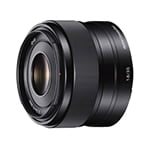 | Sony 35mm f/1.8BEST VALUE ALLROUNDER |
| View Price → |
 | Sony 50mm f/1.8BEST FOR PORTRAITS |
| View Price → |
Which Lenses Work with the Sony a6300?

Sony a6300 + Sony 16-70mm f/4 – a great combination as an everyday walkaround.
There are two types of camera lenses that will work with the Sony a6300 – ‘E’ and ‘FE’. ‘E’ lenses were made specifically for crop sensor cameras (like the Sony a6300) and are generally smaller and lighter than comparable FE lenses.
‘FE’ lenses, on the other hand, were made to cover the entire 35mm frame of a full-frame camera. They can be used on all Sony mirrorless cameras regardless of whether they’re crop sensor or full-frame, though on the Sony a6300 there will be a 1.5* focal length multiplication – so 35mm will be more like 50mm.
If you’re not planning to upgrade to a full-frame Sony camera, it’s best to stick with ‘E’ lenses, as they’re smaller, lighter, and much less expensive. They were also made for the Sony a6300’s sensor size.
Sony a6300 Lens Reviews
There are, of course, several third-party lens options out there that work with the Sony a6300, a6500, and every other crop-sensor Alpha model, but to keep things simple this post will be sticking to Sony lenses for now.
The ‘native’ lenses below were specifically designed for Sony cameras, and therefore perform better than the third-party options.
That said, let’s take a look at the ones I recommend here in 2024.
1. Sony E 24mm f/1.8
Focal Length: 24mm (equivalent to 36mm)
Weight: 225g (7.9 oz.)
Size (Diameter x Length): 63 x 66mm (2.5 x 2.6in)
Filter Diameter: 49mm
Minimum Focus Distance: 0.16m (6.3in)
The first thing to note about this 24mm lens is the quality. It’s immediately apparent when you pick it up, this is a high quality lens.
With an all metal barrel and super sharp optics, this lens is definitely worth the cost. This makes it one of the best lens for Sony a6300 that you can get.
You often get what you pay for in terms of lens quality, and this is no exception.
It might be confusing for beginners to spend more on a lens than a camera body but the quality of your images is highly dependent on the lens you put in front of your sensor.
The Sony 24mm f/1.8 produces razor sharp images and has amazing low light performance with its f/1.8 aperture.
While it feels very sturdy, it doesn’t feel heavy. It feels like a solid lens that will last a long time.
I would compare the quality to that of other Sony full frame FE lenses I own in a smaller/lighter package designed specifically for the Sony a6xxx series.
The fast aperture is likely what makes this lens is one of the larger APS-C E-mount lenses.
The f/1.8 aperture on the Sony 24mm f/1.8 lets quite a bit of light. Add that to the Sony a6300’s excellent low light performance and you get a great combo, especially in low-light environments.
The focusing feels smooth and the lens barrell offers a nice grip. This makes it easy to hold, ensuring your images are tack-sharp when shooting without a tripod. The metal design definitely adds to the overall feel.
The autofocus on the Sony 24mm f/1.8 is fast and effective. Of course, I expect prime lenses to be sharp, but the quality of the 24mm f/1.8 definitely exceeded my expectations. It’s an impressively sharp lens.
Wide open at f/1.8, the image was quite sharp across the whole frame. Stop down to just a little and the sharpness improves. At f/4 everything is tack sharp corner to corner.

Sony 24mm f/1.8 | 1/1600 f/4 ISO 200
The Sony 24mm f/1.8 is a bit larger and heavier than other primes in its class. In general, the better the optics, the heavier the lens – usually due to the amount of glass that needs to be used.
For me, though, I much prefer a lens that has higher quality and sharper optics to one that’s lightweight, at least in most scenarios. If you’re looking for great all-around high-quality prime lens for your Sony a6300, you can’t really go wrong with the Sony 24mm f/1.8.
I selected this lens as a favorite because of the focal length. I strongly encourage everyone to try shooting at 35mm, or in this case, the equivalent of 35mm since the a6300 is a crop sensor camera.
With an equivalent focal length of 36mm, the Sony 24mm f/1.8 is a perfect do-anything match to the a6300.
This lens works really well for a wide variety of subjects! Talk to most seasoned pro’s and they will promote the utility of the 35mm as a great, all-round lens – from portraits to landscapes. This focal length in particular is incredibly versatile.
You may have heard that your first lens should be “nifty fifty,” but I’d go with a 35mm over a 50mm any day!
2. Sony E 16-70mm f/4
Focal Length: 16-70mm (equivalent to 24-105mm)
Weight: 308g (10.9 oz.)
Size (Diameter x Length): 67 x 75mm (2.6 x 3 in)
Filter Diameter: 55mm
Minimum Focus Distance: 0.35m (13.8in)
It’s hard to deny the versatility of a mid range zoom, and the Sony 16-70mm f/4 is no exception.
This lens is great for a lot of different styles of photography. With the wide range of focal lengths you can be ready to shoot any subject.
Typically I shoot with prime lenses but if you’re looking for a do-anything zoom lens, this is the one to get for the Sony a6300.
It has a constant f/4 aperture that keeps things consistent throughout the zoom range, meaning that even when you zoom in or out, the aperture can stay the same.
When you shoot in full manual mode, the last thing you want is for a lens to change aperture when you zoom in. It throws off your exposure and slows you down.
At 16mm, this lens is great for shooting wide landscape image,s and at 70mm it creates nicely blurred backgrounds (bokeh) for sharply defined portraits.
For its wide range of zoom, the Sony 16-70mm f/4 features a surprisingly compact design. Even with the 16-70mm attached, the a6300 will still zip under a jacket with ease.
It makes a great travel lens to document adventures, especially when you aren’t sure what types of subjects you might encounter.
Obviously, if you’re going for as compact as possible, a prime lens is best. If you need the versatility of a zoom, however, the 16-70mm is a great wide angle choice.
Another feature that stood out was the sharpness of this lens. It stayed relatively sharp throughout the zoom range, and handles direct sunlight well – see sample image below.

Sony 16-70mm f/4 | 1/1600 f/4 ISO 800
As far as build quality is concerned, the metal-feeling design definitely makes a difference, both in handling and in durability. That doesn’t make this a particularly light lens though. The Sony 16-70mm f/4 weighs in at 308g (10.9 oz), which makes it the heaviest lens in this review. Still, its quality and zoom range flexibility make it one of the best lenses for Sony a6300.
Even so, the Sony 16-70mm f/4 still weighs considerably less than the Sony a6300 camera body. That makes it balance nicely on the small a6300 body. It is also much lighter than equivalent setups from other manufacturers.
Because of the relatively slow f/4 aperture, this lens is not ideal for shooting in dark scenes and the autofocus slows down in low light. I’d recommend either using a flash, or some form of tripod in order to get a sharp photo.
I do notice that this lens has a little more distortion than I would like; the APS-C crop factor means that the lens has to use a wider focal length than a full frame would use to achieve the same end result.
However, the distortion wasn’t a deal-breaker for me – it was just something I noticed and would need to be aware of when shooting certain scenes the need to have straight/proportional lines (i.e. buildings or faces).
Either way, this level of lens distortion is easily fixed in Lightroom – you can either click on a button to fix it in one step, or add ‘lens profile corrections’ to an import preset, to fix the photos when you import them.
Overall, the Sony 16-70mm f/4 is a fantastic lens that serves it’s purpose well: cover a wide variety of subjects and make crisp images.
3. Sony E 20mm f/2.8
Focal Length: 20mm (equivalent to 30mm)
Weight: 69g (2.4 oz.)
Size (Diameter x Length): 63 x 20mm (2.5 x 0.8in)
Filter Diameter: 49mm
Minimum Focus Distance: 0.2m (7.8 in)
This lens immediately grabbed my attention because of the incredibly compact design. It literally fits in the palm of your hand!
When mounted on the Sony a6300, the whole set up is similar in size to a point-and-shoot camera, but it has the awesome image making power typical of high quality Sony mirrorless cameras.
It’s awesome for making images in an incognito situation, especially when combined with the silent shutter on the a6300.
The Sony 20mm f/2.8 paired with a compact Sony body like the a6300, allows you to have the minimum amount of equipment between you and your subject.
Like the Sony 24mm f/1.8 (favorite lens mentioned above), this lens has a great focal length. At a 30mm equivalent, it is a little wider than the 35mm sweet spot but still has a lot of the same benefits.
It is an awesome lens for documenting life, especially when you appreciate the simplicity of a prime lens.
The Sony 20mm f/2.8 is wide enough to capture the scene but not so wide that it distorts things too much.
This tiny pancake lens packs down small, making it ideal for travel, while the focal length works well for just about any standard subject. Portraits, family, landscapes – this little lens can really do it all.

Sony 20mm f/2.8 | 1/500 f/5 ISO 400
Although it’s super-light and compact, the Sony 20mm f/2.8 isn’t nearly as rugged-feeling as the all-metal barrel lenses above. It feels like a mostly plastic design, but that’s what makes is so light.
I think it would survive a drop simply because of the light design. It just doesn’t weigh enough to hurt itself.
Distortion at this focal length is to be expected, but it was completely acceptable, and again, easily fixed in Lightroom or any of the Lightroom alternatives. I think it would work well for almost everything, except for maybe closeup portraits.
Autofocus was fast and effective. I thought there might be some lag because this lens is so inexpensive, but I found it to be quite responsive.
The f/2.8 aperture was great, especially considering how compact this lens is. It can shoot in darker scenes without having to push the ISO too high. If you’re close enough to your subject, you can even blur the background nicely too.
The last thing that impresses me is the nifty lens hood that protects the front of the Sony 20mm f/2.8 – it’s really quite unique.
The lens hood protects the front element nicely from scratches, as well as from inclement weather. Also, I didn’t worry when throwing it in a backpack because I knew the lens was protected even without a lens cap.
Overall, a very impressive lens in an ultralight package, priced affordably to suit most budgets.
4. Sony E 10-18mm f/4 OSS
Focal Length: 10-18mm (equivalent to 15-27mm)
Weight: 225g (7.9 oz.)
Size (Diameter x Length): 70 x 63mm (2.8 x 2.5in)
Filter Diameter: 62mm
Minimum Focus Distance: 0.25m (9.8in)
This was the first lens I purchased for my a6300. I’m a big fan of wide angle lenses and this was no exception!
The Sony 10-18mm f/4 is the APS-C equivalent of the 16-35mm, my favorite lens for capturing wide landscape images. It is one of the best lenses for a6300 in the wide-angle category.
When I began as a photographer I always wanted to include more of the landscape in my images. When I discovered this Sony wide angle lens, it felt like I could finally capture my vision.
Dream of capturing Instagram-worthy shots with a little person and big landscape? Get the Sony 10-18mm f/4!
The wide to super-wide range of the 10-18mm will allow you to capture a viewing angle that will immerse the viewer in the frame, making your final image more powerful and striking.
This lens also maintains an incredibly compact size for the zoom range it offers. I often keep it tucked in my jacket while hiking or skiing so that I can pull it out whenever a beautiful scene appears.
Another impressive feature of the Sony 10-18mm f/4 is the excellent all-around sharpness. While it doesn’t out perform the prime lenses on this page, it definitely comes close.
Its hyperfocal distance is at 1.5 meters (5 ft), so almost everything will be sharp if you focus there or beyond about .
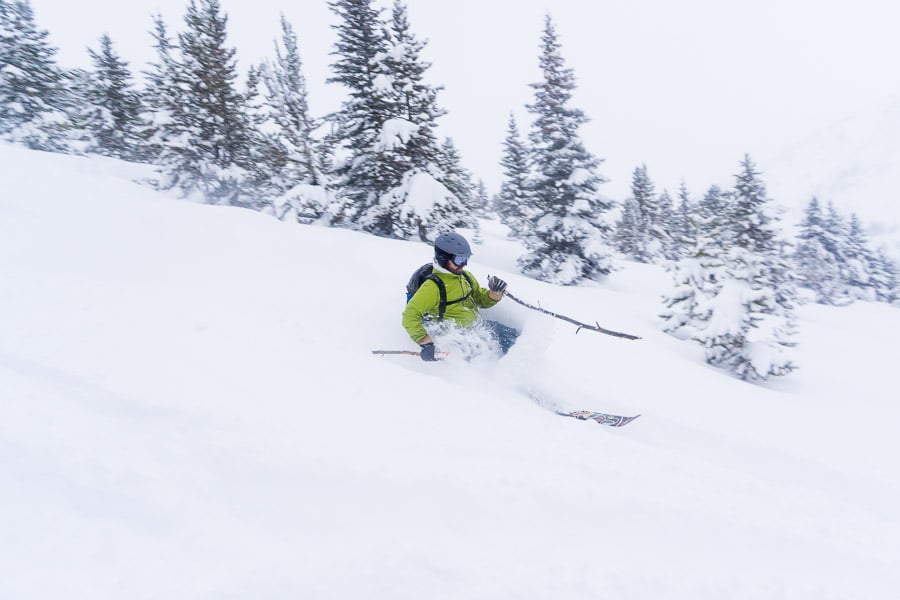
Skiing on the snowy mountains in Canada – Sony 10-18mm f/4 | 1/250 f/4 ISO 500
The build quality of this lens was more than adequate. Over the last couple of years, it has held up well to a lot of abuse.
It does have a plastic feeling design but I’ve never had any issues with it despite taking it climbing, skiing, and camping regularly.
The autofocus is fast and effective. There’s no hunting or seeking.
The Sony 10-18mm f/4 does suffer in low light scenarios, forcing you to use a higher ISO than you would with a faster lens.
If you’re looking for a Sony lens for astrophotography, however, I’d go with a fast, wide angle prime like the Rokinon 12mm f/2.
Overall, though, this is my favorite lens for sports and travel because of its focal length and wide perspective!
5. Sony E 35mm f/1.8 OSS
Focal Length: 35mm (equivalent to 52.5mm)
Weight: 154g (5.5 oz.)
Size (Diameter x Length): 63 x 45mm (2-1/2 x 1-13/16in.)
Filter Diameter: 49mm
Minimum Focus Distance: 0.3m (0.99ft)
Many photography guides and videos recommend that beginners improve by trying a 50mm ‘standard’ prime lens.
Prime lenses encourage you to frame your subjects with more purpose, zooming with your feet rather than your lens.
The Sony 35mm f/1.8 is a great option for a 50mm–equivalent for the a6300.
As an inexpensive, fast prime lens, this lens definitely deserves to be in your kit – especially if you’re just starting out.

Sony 35mm f/1.8 | 1/1000 f/5 ISO 100
The compact design and light weight of this lens is great when paired with the a6300. It balances nicely and has a very fast aperture that allows you to shoot in dark scenes.
The 50mm equivalent of this lens is a great medium focal length that does equally well at portraits and other subjects.
The bokeh is creamy smooth and consistent through most of the frame. It does get a little sharper towards the middle, but it’s hardly noticeable.
The main issue with this lens is the lack of sharpness at low apertures. It doesn’t get sharp until you stop down a lot. This was a bit frustrating since prime lenses are typically sharper than zooms.
Still, while it’s not the sharpest prime lens out there, it’s certainly one of the most affordable. It’s also incredibly light and makes for a super-compact kit.
The build quality on the Sony 35mm f/1.8 is decent – pretty much what you’d expect from this price point. I’ve dropped it a few times, though, and even with its mostly plastic design it survived and still functions flawlessly.
The autofocus is predictably fast and effective. There aren’t any issues with hunting or seeking, even in low light.
Overall, if you’re looking for a fast and affordable “nifty fifty” for your Sony a6300, this is your lens.
6. Sony E 50mm f/1.8 OSS
Focal Length: 50mm (equivalent to 75mm)
Weight: 202g (7.1 oz.)
Size (Diameter x Length): 62x 62mm (2.4 x 2.4 in)
Filter Diameter: 49mm
Minimum Focus Distance: 0.39m (15.3 in)
This lens is at the end of my list, but not because I don’t appreciate its ability to make great images.
The equivalent focal length of 75mm is not my most commonly used, but when you need to take a sharp portrait with a blurred backdrop, this is a great option.
The telephoto focal length will compress the scene and bring the viewers eye to the subject while making the background feel closer than it really is.
Understanding lens compression and the way it makes a scene look can bring a whole new dimension to your photography. This lens makes that possible – see our guide to lens compression photography.
Additionally, shooting wide open on the Sony 50mm f/1.8 creates dreamy bokeh, allowing you to easily separate your subject from the background.
This is the only lens in this review that I would use for creating clean and crisp portraits, and for that purpose, it truly excels.
In addition to blurring out the backdrop, it will also render people’s faces properly avoiding any distortion that might occur with wider angle lenses.
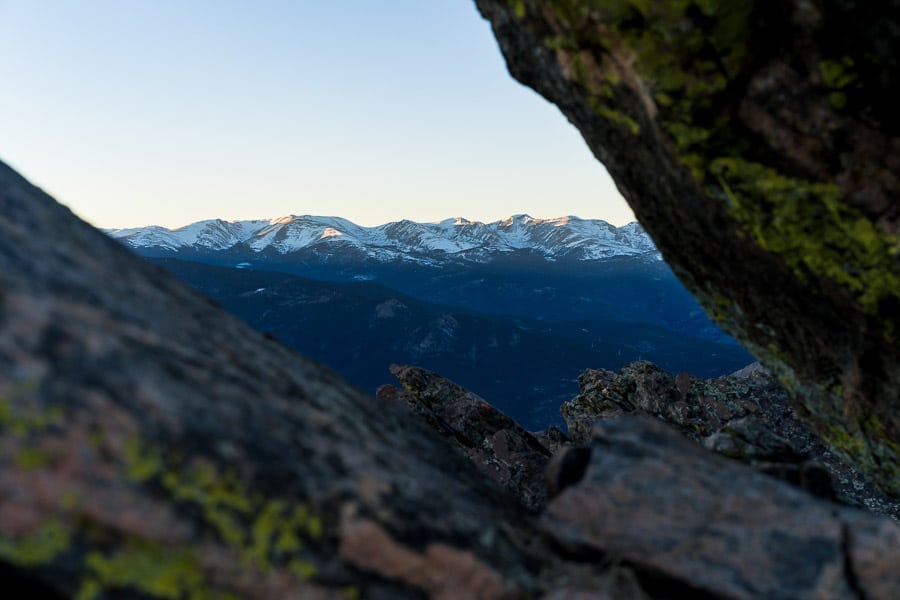
Sony 50mm f/1.8 | 1/800 f/4 ISO 200
This lens is also surprisingly compact for what it offers (50mm f/1.8). Other lenses with these specs tend to be much larger/heavier.
The sharpness is good, especially for the low price point of this lens. The design is similar to the 35mm f/1.8 and appears to be mostly plastic.
With a low weight of only 202g (7.1 oz) this lens balances nicely on a small mirrorless camera body like the a6300.
If you’re looking for an excellent yet affordable portrait lens for your Sony a6300, the 50mm f/1.8 is hard to beat!
Frequently Asked Questions
Which lens is best for Sony a6300?
There are a number of excellent lenses available for the Sony a6300. Our number one pick is the Sony E 24mm f/1.8 as it offers a really sturdy build quality, fast auto-focus, and the ability to shoot sharp images even in low light.
Is Sony a6300 E mount?
Yes. Sony’s E-mount lenses have been designed for their APS-C sensor range of mirrorless bodies, which includes the Sony a6300.
Can I use full frame lens on Sony a6300?
Yes, you can use Sony’s full frame lenses (these are the ‘FE’ lenses) on mirrorless cameras like the Sony a6300. Note that they would be subject to a crop factor (in this case a 1.5* focal length multiplication).
Best Sony a6300 Lenses | Final Words
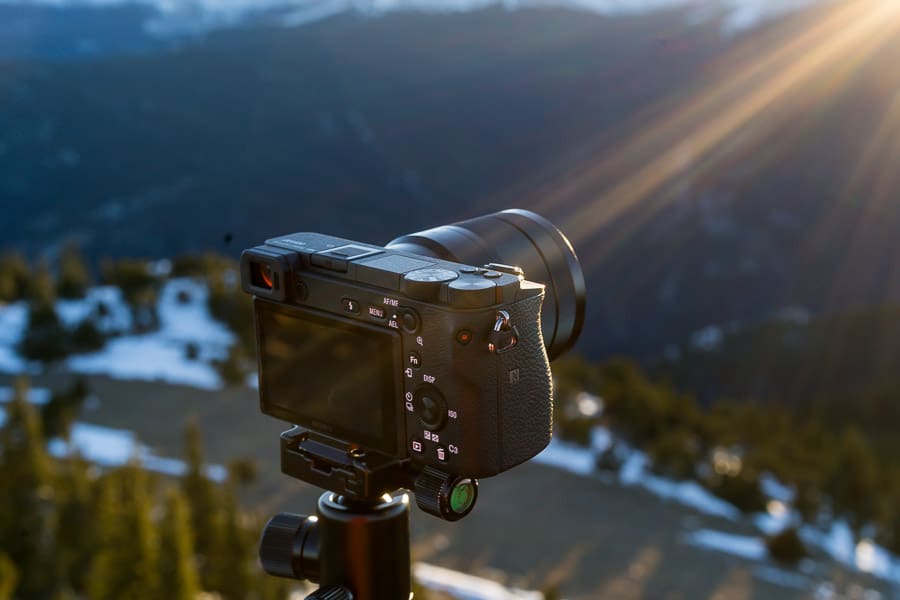
Sony a6300 + Sony 16-70mm f/4
Based on my experience, these are the 6 best lens choices available for the Sony a6300.
I think they offer the best balance of value, features, size/weight, and versatility. Each of the lenses serves a specific subject and user best, but I think they are all great choices.
It’s up to you to decide what is the best lens for the subjects you like to photograph.
Because lenses hold their value well, you can buy one to try it and if you don’t like it, sell it without losing much money.
Hopefully, my review was helpful in choosing the best lenses to pair with your a6300. My goal is to be insightful and practical so you can maximize the potential of the a6300 camera body!
What do you think? Have any other Sony a6300 lenses that you think should be on this list?

Great low-light performance, compact size, sturdy build quality and impressive auto-focus makes this a must-have lens for your Sony a6300.





